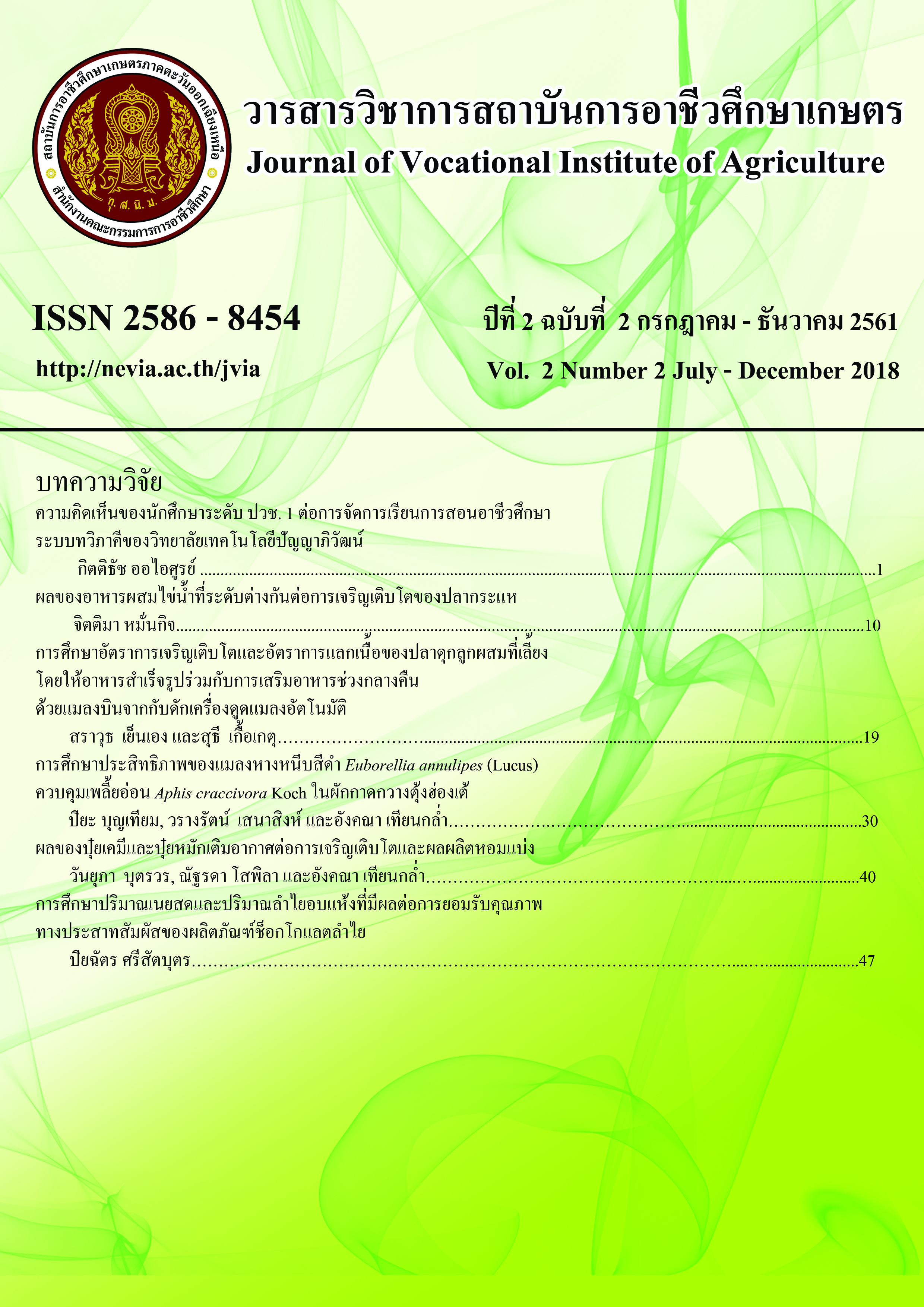Effectiveness of Earwigs (Euborellia annulipes (Lucus)) in Controlling the Aphid (Aphis craccivora Koch) in Pak Choi
Main Article Content
Abstract
The purpose of this study was to examine the effectiveness of earwigs (Euborellia
annulipes (Lucus)) in the control of aphids in pak choi (Brassica rapa subsp. Chinensis) by
comparing rates of one earwig per plant (Treatment 1) and two earwigs per plant (Treatment
2) on plants at economic injury level (the number of aphids greater than one per leaf) seven
days after transplanting. The aphid populations were counted 5, 7 and 10 days after the
release of the earwigs. By comparing the means of the populations using t-test, it was found
that there was no statistically significant difference at 95 % between both treatments. At 5, 7
and 10 days after the release of the earwigs, the average numbers of aphids were 0.36, 0.00
and 16.23, respectively in treatment 1 and 0.40, 0.37 and 51.92, respectively in Treatment 2.
Using the percentage of correction between the aphid counts after 5, 7 and 10 days in both
treatments, it was found that percentage correction from the first count was a decrease (-
707.50) and the percentage corrections from the second and third count were increases
(100 and 29.96). However, the average correction from all releases was a decrease (-192.51).
This indicates that a rate of two earwigs per plant can control the aphids in pak choi more
effectively than a rate of one earwig per plant.
Article Details
The content and information in articles published in the Journal of Vocational Education in Agriculture are the opinions and responsibility of the article's author. The journal editors do not need to agree or share any responsibility.
Articles, information, content, etc. that are published in the Journal of Vocational Education in Agriculture are copyrighted by the Journal of Vocational Education in Agriculture. If any person or organization wishes to publish all or any part of it or to do anything. Only prior written permission from the Journal of Vocational Education in Agriculture is required.

